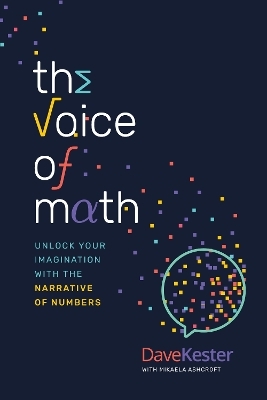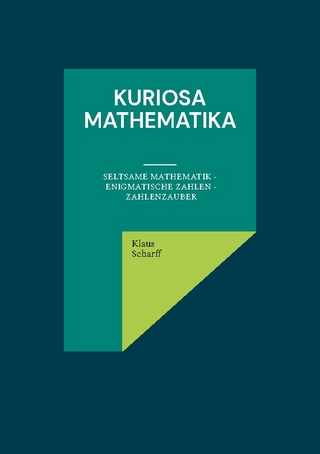
Mathematical Theory of Fuzzy Sets
Chapman & Hall/CRC (Verlag)
978-1-032-90584-6 (ISBN)
- Noch nicht erschienen (ca. Dezember 2024)
- Versandkostenfrei innerhalb Deutschlands
- Auch auf Rechnung
- Verfügbarkeit in der Filiale vor Ort prüfen
- Artikel merken
Mathematical Theory of Fuzzy Sets presents the mathematical theory of non-normal fuzzy sets such that it can be rigorously used as a basic tool to study engineering and economic problems under a fuzzy environment. It may also be used as a textbook at the graduate level, or as a reference for researchers.
The book explores the current state of affairs in set operations of fuzzy sets, arithmetic operations of fuzzy interval, and fuzzification of crisp functions, which are frequently adopted to model engineering and economic problems with fuzzy uncertainty. In particular, the concepts of gradual sets and gradual elements are presented in order to cope with the difficulty of considering elements of fuzzy sets like considering elements of crisp sets.
Features
Many extensions and equivalences for the essence of non-normal fuzzy sets
Generalization of extension principle
Presentation of the concepts of gradual sets and gradual elements.
Hsien-Chung Wu is currently a Professor at the Department of Mathematics at the National Kaohsiung Normal University in Taiwan. He earned his Ph.D from the University of Texas at Austin in the USA. He has published more than 120 scientific papers published in the international journals. He is an Associate Editor of Fuzzy Optimization and Decision Making, and an Area Editor of International Journal of Uncertainty, Fuzziness and Knowledge-Based Systems. His current research includes the foundation of fuzzy sets and nonlinear analysis.
1. Mathematical Analysis. 1.1. Infimum and Supremum. 1.2. Limit Inferior and Limit Superior. 1.3. Semi-Continuity. 1.4. Miscellaneous. 2. Fuzzy Sets. 2.1. Membership Functions. 2.2. α-Level Sets. 2.3. Identical Properties. 2.4. Types of Fuzzy Sets. 3. Set Operations of Fuzzy Sets. 3.1. Complement of Fuzzy Sets. 3.2. Intersection of Fuzzy Sets. 3.3. Union of Fuzzy Sets. 3.4. Inductive and Direct Definitions. 3.5. α-Level Sets of Intersection and Union. 3.6. Mixed Set Operations. 4. Generalized Extension Principle. 4.1. Fuzzification of Crisp Functions. 4.2. Extension Principle Based on the Euclidean Space. 4.3. Extension Principle Based on the Topological Spaces. 4.4. Extension Principle Based on the Triangular Norms. 4.5. Generalized Extension Principle Based on the Topological Spaces. 4.6. Generalized Extension Principle Based on the Normed Spaces. 4.7. Generalized Extension Principle for Non-Normal Fuzzy Sets. 5. Arithmetics of Fuzzy Sets. 5.1. Arithmetics of Fuzzy Sets in R. 5.2. Arithmetics of Fuzzy Intervals. 5.3. Arithmetics of Fuzzy Vectors. 6. Gradual Elements and Gradual Sets. 6.1. Basic Concepts. 6.2. Set Operations Using Gradual Elements. 6.3. Arithmetics Using Gradual Numbers. 7. Generating Fuzzy Sets. 7.1. Gradual Sets and Its Rearrangement. 7.2. Nested Gradual Sets. 7.3. Countable-Based Nested Gradual Sets. 7.4. Generating Fuzzy Sets from Nested Gradual Sets. 7.5. Generating Fuzzy Sets from Countable-Based Nested Gradual Sets. 7.6. Defining Membership Functions. 7.8. Generating Fuzzy Intervals. 7.9. Elements and Subsets of Fuzzy Intervals. 7.10. Uniqueness of Construction. 8. Fuzzification of Crisp Functions. 8.1. Fuzzification Using the Extension Principle. 8.2. Fuzzification Using the Expression in Decomposition Theorem. 8.3. The Equivalences and Fuzziness. 8.4. Fuzzification Using Gradual Numbers. 9. General Fuzzification. 9.1. Fuzzification Using the Extension Principle. 9.2. Fuzzification Using the Expression in Decomposition Theorem. 9.3. Equivalence for the General Case. 9.4. Equivalence for the Practical Cases. 10. General Arithmetics of Fuzzy Sets. 10.1. Arithmetics of Fuzzy Sets in Vector Space. 10.2. Arithmetic Operations Using Compatibility and Associativity. 10.3. Equivalence with the Arithmetics Using Gradual Numbers. 10.4. Binary Operations. 10.5. Hausdorff Differences. 11. Inner Product of Fuzzy Vectors. 11.1. The First Type of Inner Product. 11.2. The Second Type of Inner Product. 12. Duality in Fuzzy Sets. 12.1. Lower and Upper Level Sets. 12.2. Dual Fuzzy Sets. 12.3. Dual Extension Principle. 12.4. Dual Arithmetics of Fuzzy Sets. 12.5. Representation Theorem for Dual-Fuzzified Function.
| Erscheint lt. Verlag | 13.12.2024 |
|---|---|
| Sprache | englisch |
| Maße | 178 x 254 mm |
| Themenwelt | Mathematik / Informatik ► Mathematik ► Arithmetik / Zahlentheorie |
| Mathematik / Informatik ► Mathematik ► Logik / Mengenlehre | |
| Technik ► Umwelttechnik / Biotechnologie | |
| ISBN-10 | 1-032-90584-0 / 1032905840 |
| ISBN-13 | 978-1-032-90584-6 / 9781032905846 |
| Zustand | Neuware |
| Haben Sie eine Frage zum Produkt? |
aus dem Bereich


